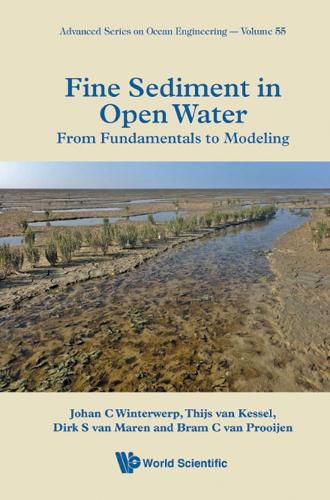Readings Newsletter
Become a Readings Member to make your shopping experience even easier.
Sign in or sign up for free!
You’re not far away from qualifying for FREE standard shipping within Australia
You’ve qualified for FREE standard shipping within Australia
The cart is loading…






This title is printed to order. This book may have been self-published. If so, we cannot guarantee the quality of the content. In the main most books will have gone through the editing process however some may not. We therefore suggest that you be aware of this before ordering this book. If in doubt check either the author or publisher’s details as we are unable to accept any returns unless they are faulty. Please contact us if you have any questions.
Fine Sediment in Open Water is mainly written for professional engineers working in estuaries and coastal systems. It provides the basis for a fundamental understanding of the physical, biological and chemical processes governing the transport and fate of fine sediment in open water and explains how this understanding can steer engineering studies with numerical models. This is a unique treatment of processes at a variety of spatial and temporal scales, from the micro-scale (colloid scale) to system-wide scales, and from intra-tidal time periods to decades.Beginning with the processes governing the transport and fate of fine sediment in shallow open water, the first eight chapters are dedicated to the hydrodynamic, soil mechanics and biological processes which determine fine sediment concentrations in the water column, in/on the bed and the exchange of sediment between bed and water column. The next two chapters treat the net fluxes of fine sediment as a function of asymmetries in forcing and sediment properties. These fundamental processes form the basis for the subsequent chapters on modeling in which the governing equations are presented, and tools are provided to aggregate and parameterize the various processes elaborated in the first eight chapters. Further, any numerical model study should be based on a conceptual model, as illustrated in the final five chapters, which provide examples of numerical modeling studies on the transport and fate of fine sediment in a coastal sea, an estuary, a tidal river, a lake, and around and within a harbor basin.Related Link(s)
$9.00 standard shipping within Australia
FREE standard shipping within Australia for orders over $100.00
Express & International shipping calculated at checkout
This title is printed to order. This book may have been self-published. If so, we cannot guarantee the quality of the content. In the main most books will have gone through the editing process however some may not. We therefore suggest that you be aware of this before ordering this book. If in doubt check either the author or publisher’s details as we are unable to accept any returns unless they are faulty. Please contact us if you have any questions.
Fine Sediment in Open Water is mainly written for professional engineers working in estuaries and coastal systems. It provides the basis for a fundamental understanding of the physical, biological and chemical processes governing the transport and fate of fine sediment in open water and explains how this understanding can steer engineering studies with numerical models. This is a unique treatment of processes at a variety of spatial and temporal scales, from the micro-scale (colloid scale) to system-wide scales, and from intra-tidal time periods to decades.Beginning with the processes governing the transport and fate of fine sediment in shallow open water, the first eight chapters are dedicated to the hydrodynamic, soil mechanics and biological processes which determine fine sediment concentrations in the water column, in/on the bed and the exchange of sediment between bed and water column. The next two chapters treat the net fluxes of fine sediment as a function of asymmetries in forcing and sediment properties. These fundamental processes form the basis for the subsequent chapters on modeling in which the governing equations are presented, and tools are provided to aggregate and parameterize the various processes elaborated in the first eight chapters. Further, any numerical model study should be based on a conceptual model, as illustrated in the final five chapters, which provide examples of numerical modeling studies on the transport and fate of fine sediment in a coastal sea, an estuary, a tidal river, a lake, and around and within a harbor basin.Related Link(s)